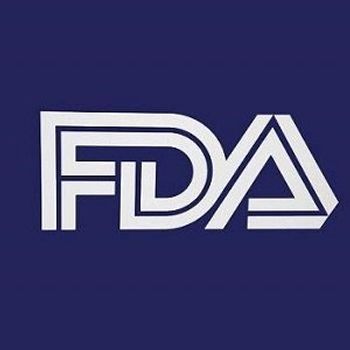
NeuroVoices: Fabian Somers, PhD, on the First Approved Drug for Thymidine Kinase 2 Deficiency
The vice president and Asset Head of Rare and Ultra-Rare Diseases at UCB provided clinical perspectives on the FDA approval of Kygevvi, the first marketed treatment specific for patients with thymidine kinase 2 deficiency (Tk2d).
Over the past few years there has been a meaningful uptick in approved therapies for rare neurologic disorders, especially those with a genetic basis. Many of the changes affect both technological advances and shifting regulatory platforms that better accommodate ultra-rare populations. More recently, the
The newly approved therapy is UCB’s doxecitine (dC) and doxribtine (dT), a fixed-dose combination therapy designed to support mitochondrial DNA replication. Before its approval, the drug was awarded orphan drug, breakthrough, and priority review designations by the FDA, in addition to having its new drug application accepted by the European Medicines Agency (EMA). According to UCB, the drug is expected to be commercially available by the first quarter 2026, while it awaits regulatory decision by the EMA.
To learn more about the significance of the approval and its effect on the Tk2d community, NeurologyLive® sat down with Fabian Somers, PhD, vice president and Asset Head of Rare and Ultra-Rare Diseases at UCB. As part of a new iteration of NeuroVoices, Somers outlined the clinical journey leading to Kygevvi’s approval, highlighting its impact on survival and quality of life for patients with Tk2d. Furthermore, he spoke on the design of the clinical program, key safety considerations for treating physicians, and how this therapy offers a transformative new option for a community that previously had none.
NeurologyLive: What is Tk2d and how has it been treated historically before the approval of Kygevvi?
Fabian Somers, PhD: This approval is huge, Marco. It’s a pivotal moment for the TK2d community. As we just discussed, there was nothing before that came close to improving symptoms, let alone survival. To quote a prominent member of the community, Kristen Clifford, CEO of the United Mitochondrial Disease Foundation, "Having the first-ever treatment approved for TK2d is not only meeting a critical need, but it represents something greater—it’s hope for the future."
That captures it perfectly. Kygevvi brings real hope—it gives the gift of hope and the gift of time. For physicians, it means we can finally go beyond simply easing symptoms through supportive care and instead help patients live longer, more fulfilling lives. This is a true paradigm shift for these families.
Discuss the clinical program of Kygevvi, what supported its approval?
The approval was supported by safety and efficacy data from several studies: one phase 2 clinical study, two retrospective chart reviews, and one expanded access program. Altogether, these included 82 unique treated patients with symptom onset up to 12 years of age. That’s an important point because it also defines the patient population included in the FDA-approved indication.
And before going into the details, I’d like to emphasize how significant that number is. When these studies were conducted, there were roughly 200 known TK2d patients globally. So enrolling 82 patients means that UCB built the largest and most comprehensive TK2d database ever created. This was a major contributor to the strength and credibility of the results.
The findings showed that survival from treatment start improved dramatically. Treatment reduced the overall risk of death by approximately 86%. That’s an enormous improvement. The median age at symptom onset was 1.5 years, which matches what we know about how early this disease presents, and the median treatment duration was four years. Overall, these data showed a strong and sustained survival benefit.
From a safety standpoint, the most common adverse reactions—occurring in at least 5% of patients—were diarrhea, abdominal pain, vomiting, and elevations in liver enzymes such as ALT and AST. These were consistent with what we typically expect from a mitochondrial therapy, and overall, Kygevvi was well tolerated.
What should clinicians consider as Kygevvi begins to be integrated into clinical care?
I’d actually start even before treatment begins. Because TK2d presents as a myopathy, it’s crucial that physicians keep this condition in mind and test for it early to avoid misdiagnosis. Early diagnosis makes a big difference—patients who start treatment earlier experience more pronounced benefits.
Once a patient is on Kygevvi, there are a few key safety considerations to keep in mind. Elevated liver enzymes have been observed, so it’s important to obtain baseline liver function tests. If signs or symptoms of liver injury occur, treatment should be interrupted until levels normalize or stabilize, and permanently discontinued if the abnormalities persist or worsen.
Annual monitoring of transaminase and bilirubin levels is recommended, or more frequently if clinically indicated. Diarrhea and vomiting have also been reported and, in some cases, required dose reduction, interruption, or permanent discontinuation. If these occur, clinicians should manage supportively, consider rehydration or electrolyte replacement, and resume treatment at the last tolerated dose once symptoms resolve. In general, it’s a very manageable safety profile, and the benefit-risk balance for patients is extremely favorable.
This approval brings renewed hope to patients and their families. How can we sustain this momentum going forward?
Tackling a neuromuscular mitochondrial disease like TK2d requires every stakeholder to work together. It’s not just about UCB—it’s about the entire ecosystem: patient associations, treating physicians, genetic laboratories, payers, and policy makers. Everyone has a role to play.
At UCB, we’re committed to amplifying our collaborations with these stakeholders to improve disease awareness, reduce time to diagnosis, and ensure access to Kygevvi for all eligible patients. The earlier treatment starts, the greater the impact, so awareness and screening are critical.
We’re also pursuing regulatory reviews in Europe through the EMA and considering additional submissions in other global regions. The momentum is strong, and with continued collaboration, we believe we can make a lasting difference for the TK2d community worldwide.
Newsletter
Keep your finger on the pulse of neurology—subscribe to NeurologyLive for expert interviews, new data, and breakthrough treatment updates.



































